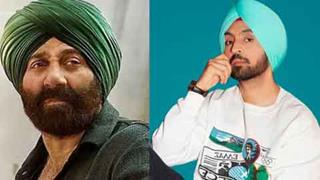Like a Bollywood starlet, convergence has arrived fashionably late to its own party and 2007 is set to witness a blitz of convergence of various media - films, music, home video, satellite TV, radio, Internet, animation, gaming, etc.
Convergence of media will be the buzzword in the years ahead, trade observers say.
The most successful filmmakers will be those who recognise the consolidated potential of various revenue streams because opportunities to be tapped for maximising results will be so much that it would be impossible to produce a flop, says Derek Bose, who has penned several books on Bollywood.
While TV and filmdom have been intrinsically intertwined for a long time now, trade observers say filmmakers can gain much by developing synergy with mobile technology simply because mobile penetration in India is far higher than Internet.
Ditto for TV channels that are already looking for a presence in other media such as mobile phones or Internet. News channels such as TV18, NDTV and Aaj Tak have an upstart. TV18 has, in fact, posted a 600 percent revenue growth in its Internet business.
Mobile companies and Internet portals are clamouring for cross-promotion. The latest being the release of renowned music composer A.R. Rahman's music video shot on Nokia's mobile cinemascope format called "Pray for me brother". It will be available on Nokia N-series early next year.
News reports citing a survey by the Cellular Operators Association of India (COAI) say the mobile music download is growing at a scorching pace and is stagnating the growth of legal conventional music.
Some estimate the size of the mobile music market and predict that it may be a lot bigger that conventional music already. According to the COAI, the mobile music industry in India is worth nearly Rs.5 billion and is on the verge of overtaking the legal, conventional music industry.
According to a report by the Federation of Indian Chambers of Commerce and Industry (FICCI) and Price Waterhouse Coopers (PwC), the size of the conventional music industry is around Rs.7 billion and is estimated to end at Rs.7.2 billion in 2006-07.
By the end of this financial year, COAI expects that the mobile music industry, which is growing at the rate of 40-50 percent, will be worth in excess of Rs.7.2 billion.
Clearly, it took a while for the promise of convergence to jump from a drawing board into consumers' hands, but it's increasingly here now, bringing users media consumption closer to the freedom of anything, anytime, anywhere.
In December 2005, Bollywood film "Rok Sako To Rok Lo" was screened in its entirety to movie buffs in Delhi, Bangalore, Hyderabad, Mumbai and other parts of India through EDGE-enabled mobile phones with live video streaming facility.
This is said to be the first time that a feature film was fully accessible via mobile phones. A year has passed before anyone else tried an encore. Perhaps the idea was ahead of its time and in all probability will work in years ahead.
A confluence of factors is propelling convergence into the mainstream - from digitisation of content to pervasive broadband access and lower-cost, higher performance technology - this is unleashing a wave of creative potential across the world and media content is leading the charge.
A section of industry feels that new media is in its infancy and is more a promotional platform than a revenue generator.
Says Zarina Mehta, chief operating officer of Hungama, "Convergence is really important, but it will take time to mature. It is at least two-three years away, though we are all working on it."
Like they say, only time will tell.
Convergence is enabling Bollywood stars to take to crooning, anchoring TV shows, dancing in competitions and what have you. After decades of working in silos, the kings and queens of tinsel town are having a blast of a time.
Be it Shah Rukh Khan anchoring hit TV game show "Kaun Banega Crorepati" or Urmila Matondkar, Sanjay Dutt singing with Asha Bhosle or scores of actors taking to the ramp or hosting TV shows, convergence is happening all around us.
The increasing number of international stars and wannabes lining up for working in Indian entertainment industry and some Indian stars landing plump assignments from foreign studios are also signs of the times to come.
Indian musicians, cinematographers and animators are also getting to work overseas and integrate with other film industries. Clearly, the world is not enough for India's entertainment industry as it sets its eyes to converge and integrate.
2007 will see convergence of entertainment in India
Monday, December 25, 2006 13:09 IST


















